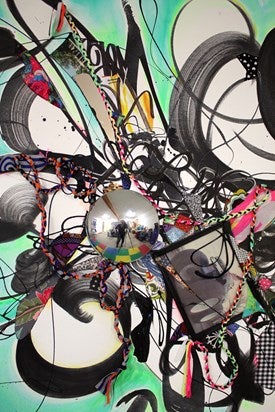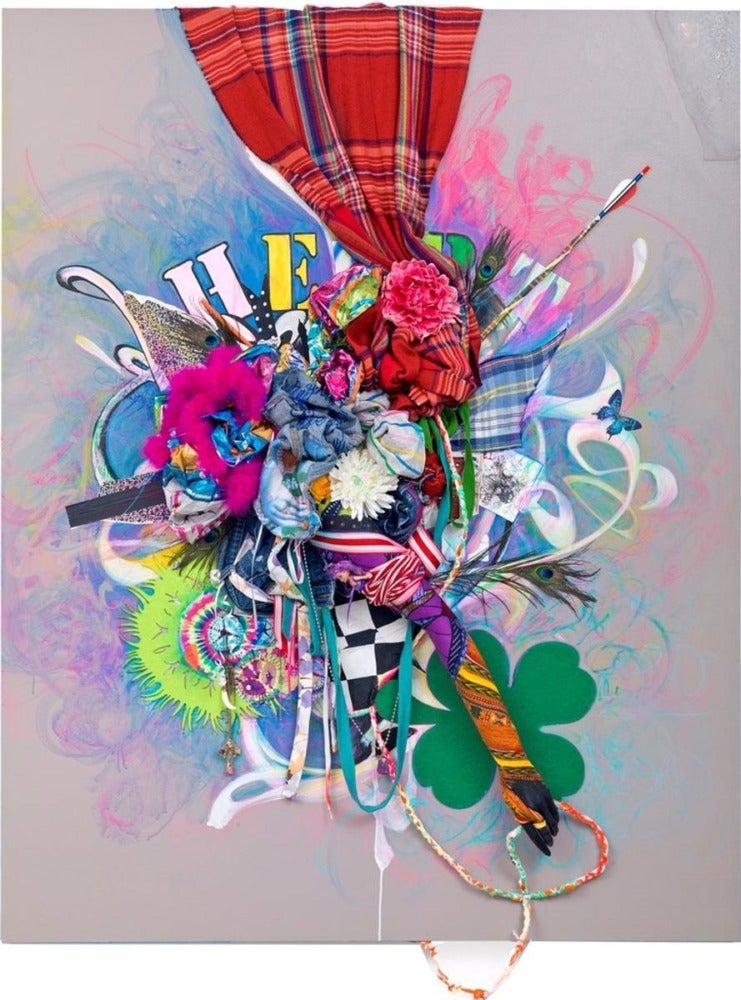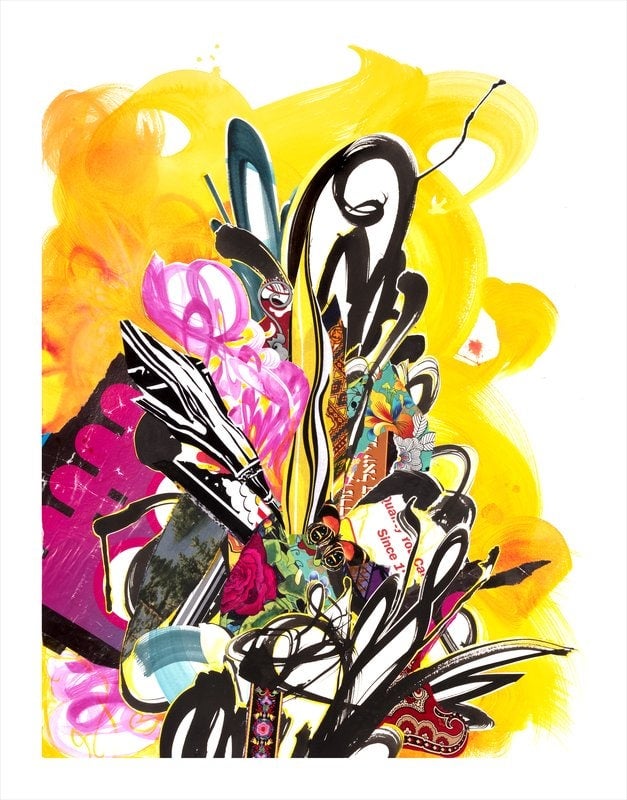
Shinique Smith’s exhibition “Wonder and Rainbows,” on view at the Frist Center for Visual Arts through January 10, is gorgeously wrought, combining various elements of the artist’s arsenal of techniques. Smith’s work is tied to journeys, that of adolescence to adulthood, of spiritual exploration, of art-making itself, and finally, of color. The more I thought about the show, the more it put me in touch with my own fearful and exalted coming-of-age experience. “Wonder and Rainbows” pops with that sense of discovery and burden that comes with growing up, when caught between our hell-bent claiming of a space in the world and a stubborn clinging to our roots.
Raised in Baltimore and based in New York, Smith has built a body of work that is deeply personal and accessible, mimicking dance with it’s spontaneity and delicate gestures. The exhibition includes several of Smith’s mixed-media paintings. Each has a strong centrality — a nod to Smith’s interest in Eastern philosophy and religion — and read like blossoms that erupt almost violently from their canvases, as if they are escaping some secret place into a glorious sort of defiance. In these, Smith combines used clothing and textiles with everyday found objects of girlhood: butterflies, fabric carnations, and necklaces are twisted and braided together with ribbons, cords, and cast-off garments. She doesn’t shy away from cliché, either. Instead, she embraces ballet tutus, fairy wings, and dolls as a way to elevate the lived experiences of girls, which are often trivialized and ignored. This is particularly true of girls who are marginalized, who despite persistent oppression continue to imagine themselves blooming.

We see this in Inner Clock, in which red flannel and blue plaid meet a hot pink boa, and an arrow and a mannequin’s arm act as hands of a clock. The dial at the center is a careful construction of penned-up jeans, a Mylar balloon, peacock feathers, a knock-off Barbie doll, and other scraps and toys. A piece like this has the potential to be sentimental, but with Smith’s confident hand, it is a bouquet of the quick progression of girlhood moments. Inner Clock celebrates the wonders girls indulge in before they must navigate the unknown waters of teendom and then adulthood. It is also a message of caution, heeding melancholy for what is lost as teens become conscious of societal expectations for women.
In other of Smith’s paintings, she uses heavy black calligraphic lines that push outward from the center in wisps, swirls, and loops. Smith was a graffiti artist in her adolescence and studied Japanese calligraphy in undergrad, and her confident brushstrokes can be attributed to this formative work. She also began classical training in the visual arts in grade school at the School for the Arts in Baltimore. She paints with bright, bold, emotional colors laid down in vivid waves, reflecting an inner state that is both defiant and celebratory. In the 14-foot-long Black, blue, green, yellow, orange, red, pink, Smith weaves and bundles clothing, ribbon, and knotted cord into a rainbow of panels created entirely from reused textiles. It shows that, to Smith, art belongs to the spiritual life, but also to the corporeal.

Of course, the use of recycled clothing and accessories is an intentional element in all of Smith’s work. She sources cast-off textiles from friends and relatives, many of them worn herself, and others salvaged from donation piles and Goodwill racks. Smith, whose mother was a fashion designer and magazine editor, became interested in the ways we use clothing to build identity. By reusing clothes that have been discarded, she gives them another life and imbues her art-making with a sense of shared history.
“Wonder and Rainbows” also includes four bundled sculptures that hang from the ceiling at varying heights. These resonate with a sense of place and time, implied narratives that hang around like ghosts. The bundles also reference bales of unwanted goods that are transported from the U.S. to developing countries, bringing the waste of American consumerism to light.
At her artist talk at the Frist on the exhibition’s opening day, Smith described finding wonder in the everyday, in rainbows seen in parking lot puddles and patterns on butterflies. But, to Smith, this wonder can’t exist without darkness. Joy, she said, is not easily found; we must let go of personal hardship before we find an ecstasy and a beauty within ourselves and the world. Like Smith, “Wonder and Rainbows” is in many ways poetic, a study in the techniques of composing verse while remaining open to the spontaneity of improvisation.




